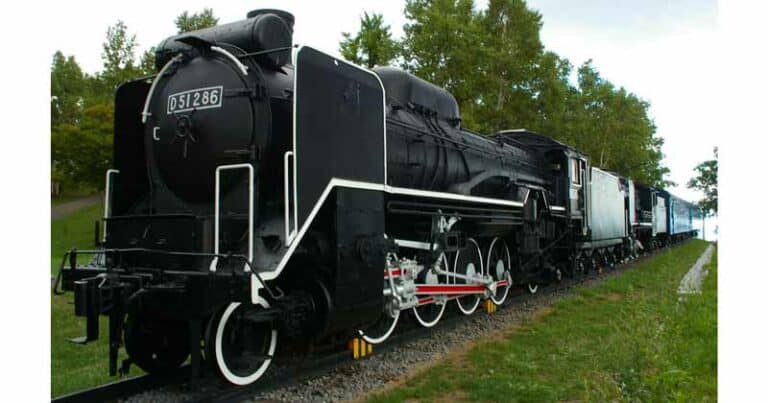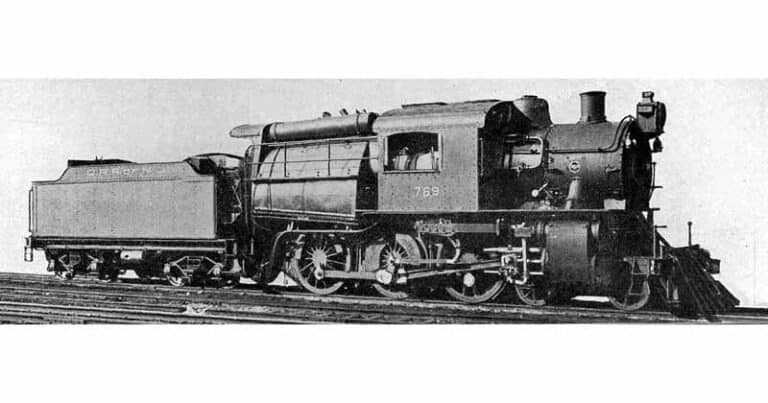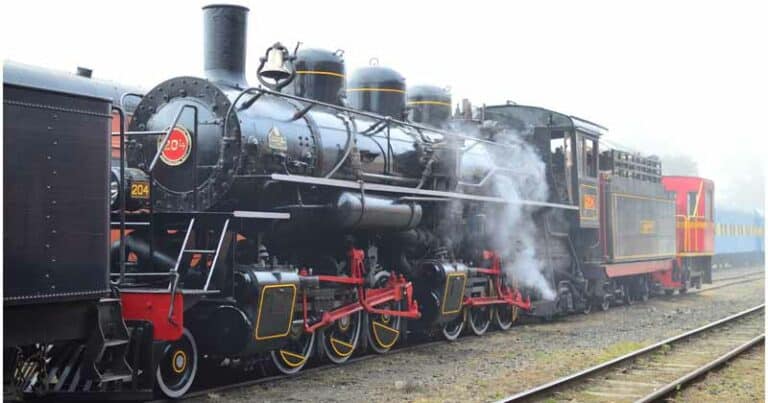What Is A Tank Engine?
The most famous tank engine is no doubt the one named Thomas from the Island of Sodor who was introduced in 1945. However steam locomotives with a “tank” design have been around since the very early days of steam locomotives. Basically a “tank” locomotive is a steam locomotive that carries its water and fuel in tanks right on the locomotive.
This on-board fuel and water supply was very handy for industrial locomotives which had very short runs around a factory grounds. In this type of facility space was often at a premium and the tank locomotive did away with the usual tender pulled immediately behind the locomotive.
The first tank locomotives just put the tender on a lengthened frame behind the cab. But this proved to be too limiting and in many cases required the use of supporting trailing wheels, like the example below built by the Swiss Locomotive and Machine Works in 1886.

Further development of industrial locomotives refined the idea and put the tanks on top of the boiler. The Brede Waterworks Tramway locomotive, an 18-inch gauge industrial locomotive, is an example of this type. These are called Saddle Tank locomotives, since the tank sits atop the boiler like a saddle on a horse.
Saddle tanks were a popular and efficient design for smaller locomotives in industrial use because they gave the engine more water, but at some cost. Access to the boiler was restricted, making some maintenance more difficult. The increased height of the boiler and tank combination could make see the track ahead difficult for the engineer. The primary problem was a higher center of gravity which could unbalance the locomotive and lowered the speed at which the locomotive could safely operate.

The most common type, which began appearing around 1840, has tanks mounted on either side of the boiler. This type allowed for larger locomotives that could work the mainline. Depending on how the side tanks were built, the entire length and depth of the boiler or higher up on the boiler and not extending down to the footplate, this design was more stable at higher speeds.
Longer side tanks were sometimes tapered downwards at the front to improve forward visibility. Other side tank locomotives went all the way to the front of the smokebox, giving the front of the locomotive a rectangular face, something different than the usual round smokebox front.

The pannier type of side tank locomotive was used extensively by Britain’s Great Western Railway. This design allowed a lower center of gravity than saddle tanks but left much of the boiler and piping readily accessible for maintenance.
In most cases, the tanks, whether side or saddle, carried water. That design sufficed for locomotives which could operate on the fuel in the firebox or came back to a fueling location often, such as with industrial locomotives. If onboard fuel was needed a bunker was usually attached to the rear of the locomotive frame (see the GWR 5738 above).

Railfan and model railroader. Writer and consumer of railroad news and information.





